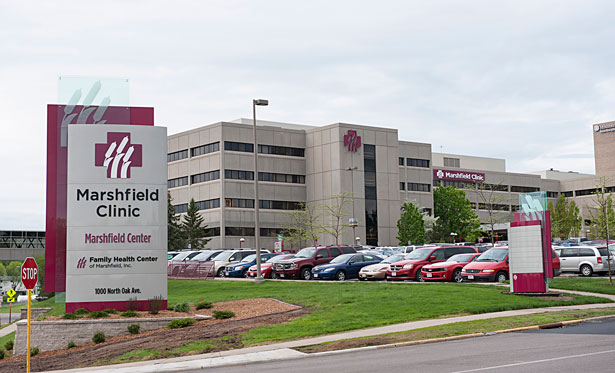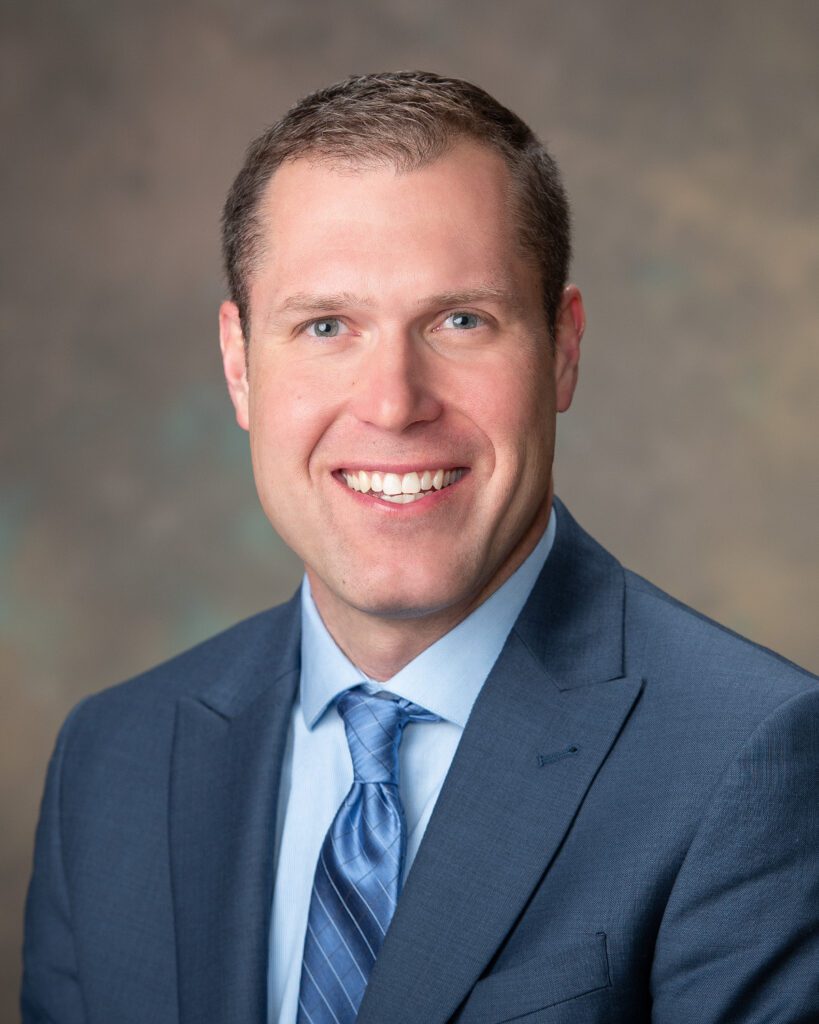July 10, 2024
Sanford Health is trying to merge again, this time with a Wisconsin-based health system, which would create a combined organization with 56,000 employees.
Marshfield Clinic Health System, a century-old integrated health system based in Marshfield, in central Wisconsin, is about a quarter the size of Sanford in terms of employees. It serves 45 communities in Wisconsin and Michigan’s Upper Peninsula.
The combined organization would have generated revenue of $10.3 billion in 2023, placing it just outside the nation’s 20 largest health systems.
The merged organization would retain the Sanford Health name and be based in Sioux Falls, with Sanford CEO Bill Gassen at the helm. Marshfield Clinic Health System would become a region within Sanford Health, similar to Sioux Falls, Fargo, Bismarck and Bemidji, led by current interim CEO Dr. Brian Hoerneman.
“Sanford Health appreciates the value of quality strategic partnerships,” Gassen said. “Sanford Health exists today only because so many like-minded organizations have worked together over the years. We have seen the great benefits that come from good, mission-driven, patient-centered organizations coming together.”

For both systems, the proposed merger follows a failed attempt to merge with other health systems. Less than a year ago, Sanford’s second attempt to merge with Minnesota-based Fairview Health Services ended with both systems abandoning the process.
Marshfield experienced a similar outcome earlier this year after attempting to merge with Minnesota-based Essentia Health since 2022. They issued a joint statement saying the merger was “not the right path forward for our respective organizations, colleagues and patients.”
Sanford also abandoned mergers with Utah-based Intermountain Healthcare in 2021 and Iowa-based UnityPoint Health in 2019.
From the outside, “it’s going to look very familiar to people when they hear about it,” Gassen acknowledged.
The common thread in this case is the shared culture of rural health care, he said. Marshfield is a community of fewer than 20,000 people in central Wisconsin. The largest geographic areas served by the health system are in places like Wausau and Eau Claire, both of which are smaller metropolitan areas than Sioux Falls.

“Two-thirds of the patients we serve in Sanford come from rural communities,” Gassen said. “We’ve been very vocal about our aspiration to be the premier rural health system in the United States. This is a tremendous opportunity to bring together these complementary organizations. I think when we share this news, it’s going to mean a lot to people. It’s going to fit.”
Sanford reported revenue of $7.2 billion and operating income of $402.2 million in 2023, more than double the $192.3 million it posted in 2022, and is “on track” this year, Gassen said.
“I think what’s even more important is our progress against our goals to continue to improve our quality and access,” he said.
Marshfield is currently implementing a financial improvement plan after several years of losses, including $367.9 million in 2022 and $250 million in 2023.
“We’ve really made tremendous progress in addressing our financial challenges,” said Hoerneman, who became interim CEO in September 2023 but has been with the system for nearly 20 years and still practices as an emergency physician.

It highlights the challenges of providing care in a rural area, as well as declining reimbursements and rising costs for pharmaceuticals, labor and supplies. The system furloughed about 3% of its staff earlier this year and eventually cut jobs, mostly administrative and management positions, according to multiple reports.
Part of improving its financial performance has been to “find ways to reduce costs, to see how we can be more efficient by looking at things like overhead while making sure we have front-line clinical staff where they need to be,” Hoerneman said.
“That financial improvement plan has been very successful in 2024. We had a positive first quarter for the first time in a few years. The fact that we are on a much better trajectory from that perspective has been a boost for the entire organization.”
Marshfield reported positive operating income of $12.6 million in the first quarter of 2024, compared to a loss of $42.1 million in the first quarter of 2023.
Fitch Ratings recently revised its 2024 outlook for Marshfield to stable from negative, while maintaining a BBB rating, forecasting a positive operating EBITDA margin of 7% this year “as the system continues to implement a comprehensive operational improvement plan,” it said. “MCHS is beginning to see benefits from workforce efficiencies, revenue cycle improvements and other measures.”
The combined Sanford system would have 56,000 employees, 56 hospitals, 4,300 health care providers, two fully integrated health plans, specialty pharmacies and nationally recognized research institutions.
“We are very excited about this merger and the opportunity to move forward,” Hoerneman said. “As the partnership has progressed, we have seen how similar we are in culture, values and vision for the future. We have had great conversations with the Sanford Health team and have gotten to know them well. We have seen a high degree of alignment between our two organizations.”
The two systems’ two health insurance plans, Sanford Health Plan and Security Health Plan, which is part of Marshfield, would cover 425,000 members. Security is slightly larger, covering 225,000 members. Both systems have stressed the benefits of integration to maximize benefits.
Marshfield Clinic Research Institute is Wisconsin’s largest private medical research institute, with more than 30 PhD and MD scientists and 200 additional employees, as well as 150 physicians and other health care professionals engaged in medical research. The combined organization with Sanford would provide access to nearly 1,000 active clinical trials.

“We have so much in common in how we see the world; it’s going to allow us to better address the three biggest challenges we face: how do we continue to improve access, how do we continue to improve quality, and how do we do that in a financially sustainable way,” Gassen said.
“As I’ve had the opportunity, and as the Sanford Board has had the opportunity to interact with Dr. Hoerneman and his team and his excellent board, every time we do it, we come away with a very similar statement, which is that this felt really natural to us.”
Once the merger is complete, Marshfield plans to appoint three people, including an independent physician from outside the health system, to join Sanford Health’s board of directors, bringing the number of members to 15. A member of Marshfield’s board would serve on the executive committee.
The board chairs of both organizations provided supportive comments in a statement sent today.
Marshfield Clinic Health System Board Chairman Dr. George Brown said the partnership “marks a new chapter in our organization and we look forward to serving our patients as a national leader in rural health care.”
Sanford Health Board Chair Lauris Molbert said it was a “win-win for the patients and communities we serve and for our organizations that have a long history of innovation, medical leadership and dedicated caregivers,” adding that the combination “will strengthen local, patient-centered, nonprofit health care for generations to come.”
The merger is expected to close by the end of the year, subject to regulatory processes and closing conditions.